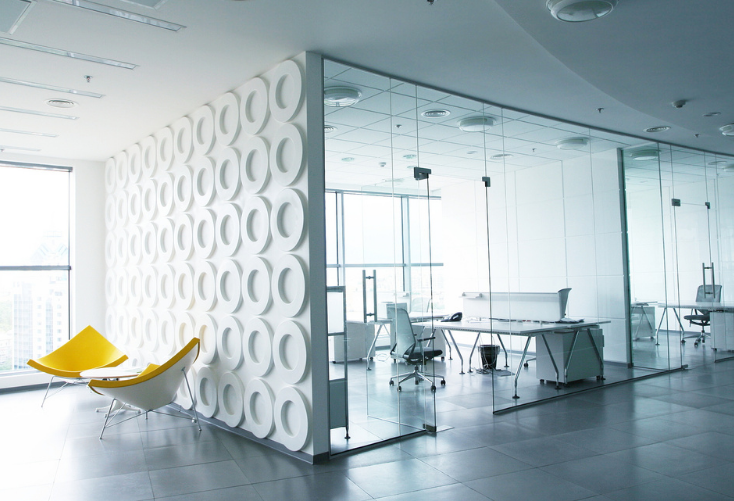Hand selected flexible workspace news from the most reliable sources to keep you ahead of the pack. We find all the latest news, so you don’t have to. Morning and afternoon updates. Stay in the know.
Here’s what you need to know today:
- The Digitization Of The Office NEW
- The Office Is Not Going Anywhere NEW
- Adjusting Company Policy For A Hybrid Work Arrangement NEW
- WeWork’s Next Move
- Why Virtual Communication Is Essential For Business Longevity
- Addressing Concerns About Returning To The Office
The Digitization Of The Office
Workplace culture as we once knew it has drastically changed over the course of just six months, and with this is an ongoing debate about what role the office will play in the future. While some companies are dedicated to a remote working arrangement, others are eager to return to the workplace.
Although it appears that this could be bad news for the office industry, it may actually create new opportunities unlike any other. Experts have predicted an office space that was more digitally integrated for years now, and this change has been accelerated due to the pandemic.
Now, property owners can begin creating long-term plans that implement digital tools to make working in and out of the office a seamless experience for employees.
For instance, many companies have opted to continue operating with a distributed workforce. However, this arrangement is not a one-size-fits-all approach, so business leaders should consider adopting satellite offices outside of the company’s main hub to better accommodate employees. Such workspaces would be equipped with the appropriate health and safety precautions, while providing users access to digital tools that make collaborating and meeting with colleagues easy.
In doing so, property teams can also have a better idea of how their occupiers are using their space now and in the future. This provides better insight into how to configure the office’s design and layout to create the ideal office for users.
Additionally, adopting such offices can help companies become more flexible and agile. This means short-term leases and the ability to scale up or down as needed.

The Office Is Not Going Anywhere
According to Gallup, only 3.4% of the US workforce worked remotely prior to the pandemic. Fast forward into March, and major companies like Twitter have announced employees can work remotely indefinitely.
So can we expect a completely permanent transition to remote working in the near future? While the past few months has taught workers that there are indeed numerous benefits to working from home, there are still issues with a fully distributed workforce. Even companies like Amazon have plans to lease 100,000 square feet of space in Dallas, while Facebook recently closed on a 73,000 square foot deal in New York City. If anything, this indicates that companies are not ready to let go of the office.
There are various reasons why companies are deciding to continue utilizing physical offices at least for some workers, including building a healthy work culture, keeping employees collaborating with one another and engaging in proper communication.
In the future, we can expect companies to adopt both remote and in-person work arrangements in order to reap the benefits and allow employees to have more flexibility moving forward.

Adjusting Company Policy For A Hybrid Work Arrangement
Companies are at a crossroads about whether they should go remote, come back to the office or move forward with a hybrid approach as economies open up across the country. With this will inevitable be a change in some company policies, and leaders need to evaluate which ones are necessary for the future.
“For the most part, policies should be applicable to both remote workers and employees at a regular work site,” said Katie Brennan, a human resources knowledge advisor at the Society for Human Resource Management. “But there are certainly going to be some considerations that an employer will want to take.”
For starters, if your company has a formal dress code policy, consider relaxing it for employees both in and out of the office to avoid the perception of favoritism.
Additionally, companies should review their flexitime policies and apply it to the entire workforce depending on the position. Doing so can boost employee morale and productivity as workers know when they can get their best work done. This includes remote working, alternating schedules and more.
If employees are coming back into the office, major changes will need to be made in order to accommodate new safety and health precautions. This means distancing work stations, health screenings, limited occupancy and other practices that are compliant with state and federal law.
For those who may opt to work from home more often, leaders should provide a section about remote work into current reimbursement policies. It should be up to companies to provide the necessary tools to operate from home, such as the internet and computers.

WeWork’s Next Move
Last year, The We Company filed its highly anticipated initial public offering for its coworking company WeWork. At the time, there was much investor concern over the firm’s corporate governance structure, which led the company to restructure its operations and receive a bailout from SoftBank.
When the pandemic hit, the company was further shaken to its core. With millions of people shifting to working from home, large vacancies plagued the firm.
However, CEO Sandeep Mathrani says that companies have started looking into taking out workspace that accommodates new physical distancing requirements.
“In an ironic way, Covid actually brought to the forefront the value of flexibility. We were very quickly able to de-densify our common areas, our lounges, our office space,” said Mathrani. “We were very quickly able to do deals with companies.”
Now, the company is offering two weeks of free All Access as an incentive to bring members back into the office or renew their leases. According to Mathrani, financial institutions have approached the company to use All Access and pay for 200 passes, allowing workers to work from any WeWork location in New York.
Additionally, the company has launched another product called On Demand, which allows professionals to rent an office hourly, daily or weekly without a membership.
The company will also be transforming some of its spaces in its “We for Education” program that helps de-densify schools and offers a new place for students to work.

Why Virtual Communication Is Essential For Business Longevity
One of the biggest challenges businesses have faced in their sudden transition to remote working arrangements has been consistent communication with workers. Virtual communication will remain an essential tool in operating with a distributed workforce, but utilizing it appropriately can make or break a company.
Using virtual tools has helped enhance transparent communication internally and externally. Resources such as Zoom and Slack have created a stronger, more direct connection between employees and leadership, while also providing them a look into their home lives.
Additionally, businesses have been able to readily adapt to external circumstances to continue operating as efficiently as possible. This means conducting video conferencing meetings instead of in-person ones, enabling collaborative chat tools and more.
Working remotely can be a challenging adjustment, particularly for those doing it for the first time. However, with the right support and virtual tool integration, a door of possibilities can be opened for the future of the workforce. This includes adopting more flexibility, boosting collaboration and productivity, as well as creating a more inclusive work environment.
Despite the obstacles that companies large and small have faced over the past several months, many will emerge stronger than ever and be equipped with the tools to stay resilient in the future.

Addressing Concerns About Returning To The Office
According to a survey from Get Working, a product by software firm Foko Retail, 40% of Canadian business leaders believe their employees want to return to the workplace.
Additionally, 37% of respondents said they expect their employees to be back in their physical offices by the first half of 2021. On the other hand, 79% said that flexibility will be integrated in their company’s operations.
“We know businesses will transition to flexible working permanently and that the use of workspace needs to be properly documented for contact tracing purposes. We also know there is a need to remotely test employees before they even enter the office,” said Marc Gingras, CEO of Foko Retail. “The question is how do companies manage capacity, contact tracing, and health and safety in a meaningful way that supports the needs of workers and employers alike.”
The research found that 79% of respondents have expressed anxiety about coming back into the workplace. According to the survey, convincing employees that it is safe to return to work and implementing physical distancing were the most difficult procedures to accomplish.
Overall, it is clear that business leaders need to prioritize the health and safety of workers before bringing them back into the workplace, as well as clearly communicate how they will actually do so. This should include discouraging those who are sick from coming in, promoting distancing and sanitation practices and modifying the workplace that makes it easier for employees or clients to limit exposure.



 Dr. Gleb Tsipursky – The Office Whisperer
Dr. Gleb Tsipursky – The Office Whisperer Nirit Cohen – WorkFutures
Nirit Cohen – WorkFutures Angela Howard – Culture Expert
Angela Howard – Culture Expert Drew Jones – Design & Innovation
Drew Jones – Design & Innovation Jonathan Price – CRE & Flex Expert
Jonathan Price – CRE & Flex Expert














